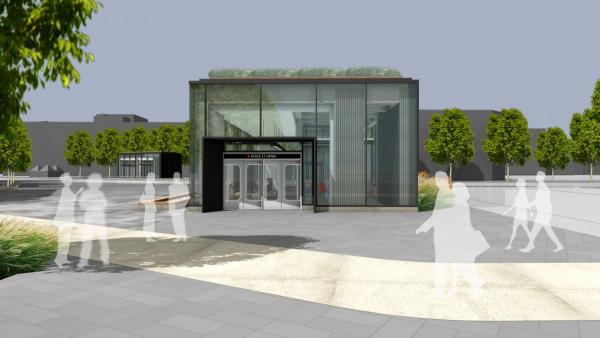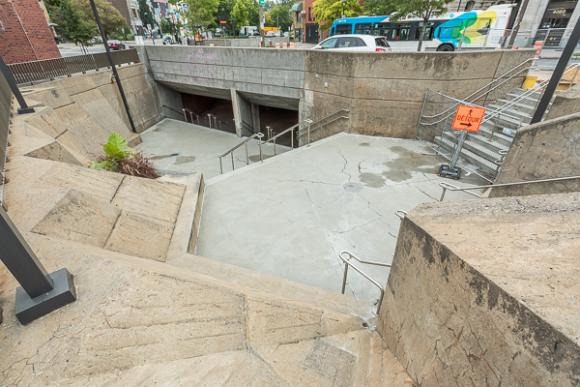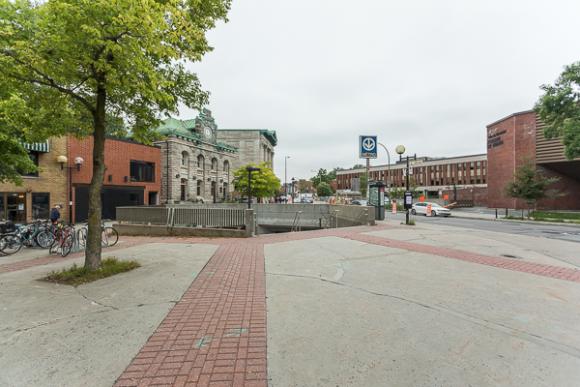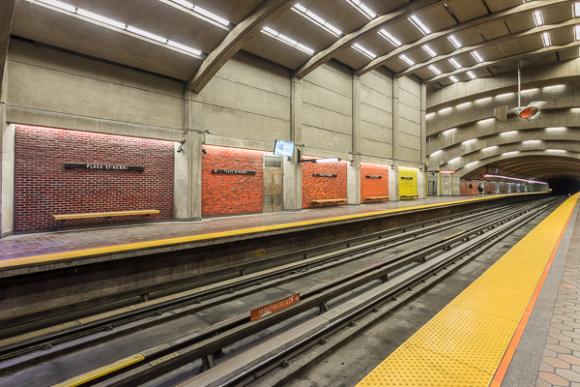Work at Place-Saint-Henri station
- Project summary
- Impact on customer trips
- Impact on local residents
- Learn more about the project
- Onglet 5
Project summary
Work is almost complete at Place-Saint-Henri Métro station
The elevators are now in service, making the station universally accessible. The two new entrances built to replace the station's secondary entrances are now open, and place Saint-Henri has been redeveloped.
Finishing work is still in progress at the station. Landscaping work on Place Saint-Henri will be completed at the end of the summer. This work will resume on August 4.
Duration of the work: November 2020 to spring 2024 (finishing work and landscaping in 2025)
Description of the work: elevator installation, construction of two entrance buildings and refurbishment of Place Saint-Henri.
Impact on customer trips
Partitions are still installed on the platforms and in some areas inside the station, but they will not affect customer trips.
Impact on local residents
The work is now complete. In the spring, landscaping work will take place on Place Saint-Henri.
Learn more about the project
Carrying out large-scale works such as those at Place-Saint-Henri station requires many steps. Especially since the elevators are being installed in a station that has already been built.
Relocation of underground infrastructure
As soon as we break ground, the first step is to relocate various underground infrastructure, such as conduits for power, natural gas, telecommunications and electrical cables, to a safe area.
Retaining walls, excavation and concrete work
Next, temporary walls must be installed to support the ground as we dig deeper and deeper into the excavation zone. After, we can begin excavating and breaking up the rock bed using a method to be decided later (either micro-blasting or mechanical equipment). We will then demolish the existing station entrances as they will be replaced by new above-ground entrance buildings. Finally, we will perform concrete work to construct the new entrance building foundations, corridors leading to the elevators, elevator mechanical rooms and elevator shafts.
Construction
Once the concrete work is finished, we will build the new entrance buildings, install the elevators in the shafts and set up all their electrical equipment in the mechanical rooms.
Exterior work
Refurbishment of Place-Saint-Henri will begin next, including earthmoving and urban furniture installation.
Electrical equipment testing
Finally, we will conduct various tests to ensure that the elevators are working properly.
- Place-Saint-Henri station was designed by architect Jean-Louis Lalonde and designer Julien Hébert, who is better known for creating the world-renowned logo of the 1967 Universal Exposition.
- The station was originally going to be called Les Tanneries, after the name given to the neighbourhood in the 18th century due to its large number of leather tanneries.
- The station’s name instead pays homage to Place Saint-Henri, more of a small street than a real public square. The neighbourhood first became known as Saint-Henri in 1810, when a chapel of the same name was established there.
Contenu de l'onglet 5
Stay informed
Stay informed of the project’s progress and other events by signing up for the electronic newsletter.
The project in images

The two underground accesses on either side of Saint-Jacques Street will be replaced by building entrances.
The two underground accesses on either side of Saint-Jacques Street will be replaced by building entrances.
Here is one of the two underground accesses that will be replaced by aen entrance building.
Place Saint-Henri will be refurbished at the end of the work.
The platforms of the station, with their colored ceramics.
The Accessibility program is made possible thanks to the additional funding announced by the federal and provincial governments to speed up universal accessibility work with the goal of having 30 accessible métro stations by 2025.





